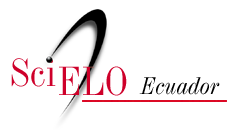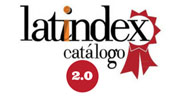Denaturation of milk proteins and their influence on the yield of fresh cheese
DOI:
https://doi.org/10.29019/enfoqueute.v8n2.162Keywords:
fresh cheese, performance, denaturation, heat treatment, milkAbstract
To determine the denaturation of milk proteins by the effects of heat treatment on pasteurization and to establish their influence on the yield of the fresh cheese manufactured, 20 laboratory- scale controlled trials and 40 plant productions were made. Crude and treated milk was used at 65 ° C for 30 minutes, 72 ° C for 15 seconds and boiled for 2 seconds, and the protein was quantified in milk to calculate percent denaturation. In the cheese the moisture content was determined and the amount of cheese obtained was quantified. The data were processed by Tukey's mean analysis (p> 0.05). The results at the laboratory level showed that the increase in temperature caused higher denaturation of the proteins, a higher yield and an increase in moisture in the cheese compared to that obtained with raw milk. However, statistically the results showed that the heat treatment does influence the denaturation of the proteins but not the performance of the cheese. The results obtained in the factory investigation revealed that at 65 and 72 ° C the yield decreases relative to the production with raw milk, but statistically does not present significant differences in the yield, concluding that the pasteurization at different temperatures denature the protein But does not influence the performance of fresh processed cheese.
Downloads
References
Fennema O. (1985). Food Chemistry. (2th Ed.). New York, U.S.A: Marcel Dekker Inc.
Hicks, L., Onuorah, C., O’Leary, J., y Langlois, E. (1986). Effect of milk quality and low temperature storage on cheese yield a summation. Journal of Dairy Science, 69(3), 649-657.
Kethireddipalli, P., Hill, R., y Dalgleish, G. (2010). Protein interactions in heat-treated milk and effect on rennet coagulation. International Dairy Journal, 20(12), 838-843.
Lau, Y., Barbano, M., y Rasmussen, R. (1991). Influence of pasteurization of milk on protein breakdown in Cheddar cheese during aging. Journal of Dairy Science, 74(3), 727-740.
Manji, B., y Kakuda, Y. (1987). Determination of whey protein denaturation in heat-processed milks: comparison of three methods. Journal of Dairy Science, 70(7), 1355-1361.
Martinez-Castro, I., Olano, A., y Corzo, N. (1986). Modifications and interactions of lactose with mineral components of milk during heating processes. Food Chem., 21, 211–221.
Rynne, M., Beresford, P., Kelly, L., y Guinee, P. (2004). Effect of milk pasteurization temperature and in situ whey protein denaturation on the composition, texture and heat-induced functionality of half-fat Cheddar cheese. International Dairy Journal, 14(11), 989-1001.
Rodríguez, S. (2002). Ingeniería de la industria alimentaria vol. III Operaciones de conservación de alimentos. Madrid, España: Síntesis S.A.
Sbodio, A.; Tercero, J.; Zannier, S.; Revelli, R. (2010). Tratamiento térmico de leche: influencia del pH y CaCl2 en la elaboración de queso Cuartirolo. Revista Internacional del Centro de Información Tecnológica, 21 (5), 107-116
Schreiber, R. (2001). Heat-induced modifications in casein dispersions affecting their rennetability. International Dairy Journal, 11(4), 553-558.
Singh, H., y Waungana, A. (2001). Influence of heat treatment of milk on cheesemaking properties. International Dairy Journal, 11(4), 543-551.
Tornadijo, E., Marra, I., Fontán, G., Prieto, B., y Carballo, J. (1998). La calidad de la leche destinada a la fabricación de queso. Cyta Journal of Food, 2(2), 79-91.
Downloads
Published
Issue
Section
License
The authors retain all copyrights ©.
- The authors retain their trademark and patent rights, as well as rights to any process or procedure described in the article.
- The authors retain the right to share, copy, distribute, perform, and publicly communicate the article published in Enfoque UTE (for example, post it in an institutional repository or publish it in a book), provided that acknowledgment of its initial publication in Enfoque UTE is given.
- The authors retain the right to publish their work at a later date, to use the article or any part of it (for example, a compilation of their work, lecture notes, a thesis, or for a book), provided that they indicate the source of publication (authors of the work, journal, volume, issue, and date).
























